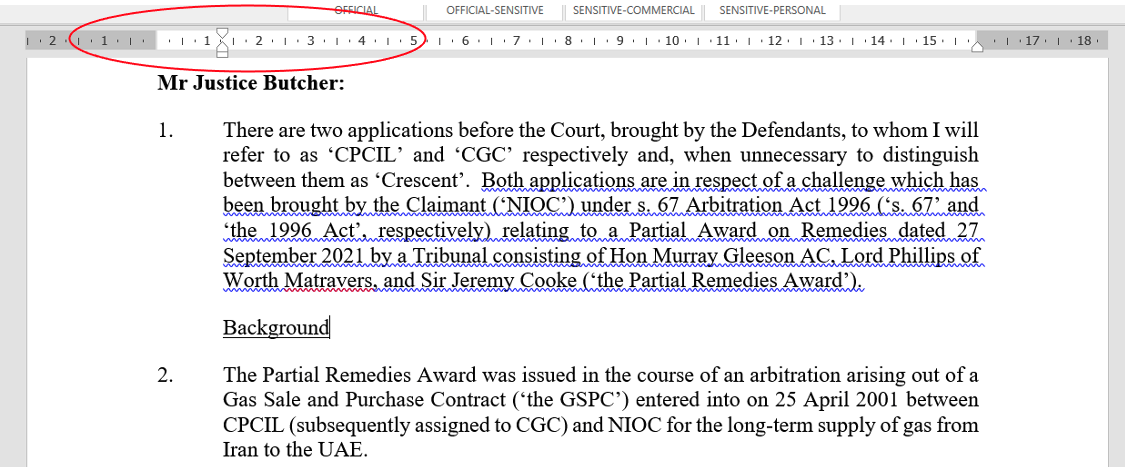Headings formatting
Headings are used within a judgment or decision to group several paragraphs together. The main rule with these is that they should NOT be indented but should instead sit flush left.
Example of an incorrectly formatted heading
'Background' in this instance has been indented in the source document, and as a result appears like this in the web version. In the Word document, it is possible to check whether something has been indented using the ruler in the margin.

In this example, the best method to resolve this would be to hover over the small rectangle under the arrow on the ruler, and when the words “left indent” appear, drag this to match the indentation of the rest of the document.

Example of an incorrectly formatted sub-heading and heading
Evrythng Ltd v Cyrus Gilbert-Rolfe [2023] EWHC 7 (Comm)
In the below example – (B) and (1) although headings denoting a sub-section within a section, should be indented flush left of the margin. Please check indentation using the ruler on the top of the document.

